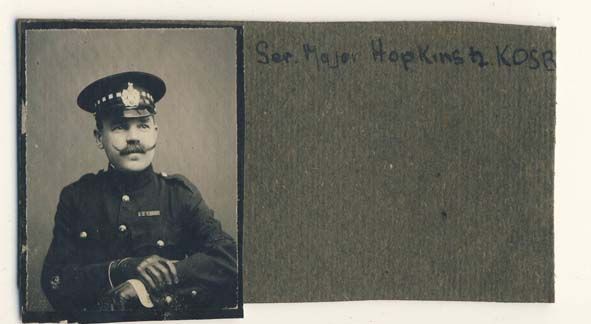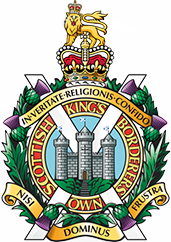A Very Hopkins Christmas
My first encounter with Sergeant Hopkins was in a photograph. He has a huge moustache and rolls of white hair from a wig poking out of the sides of a tall mitre with XXV on the front. He is dressed as a drummer of the 25th Regiment of Foot, circa 1742 and the image is immediately jarring, knowing that photographs were not yet invented. Standing by his side is Mrs Hopkins, wearing a hooded cape and with a little wicker basket on a stool beside her. Beneath the photograph is written: F.J. Hopkins as drummer, 25th Foot in 1742, Mrs F. Hopkins as Little Red Riding Hood, Fancy Dress Ball Cawnpore 1900.

They both have the usual serious expressions one expects from photographs of the time, but that only adds to the comedic tone. I bet in real life they were hilarious.
Frederick John Hopkins was born in Dublin on the 26th of April, 1871. He enlisted in the 2nd Battalion of The King’s Own Borderers in 1885, aged just 14 and, by 1886, had gained a 3rd Class Certificate of Education. He is registered in his service book as ‘Boy F. Hopkins’. He was stationed at Gibraltar, Aldershot, Cairo and India, being promoted to Corporal at Umballa and then Sergeant. He was part of the Relief of Chitral in 1895 and the Tirah Expeditionary Force in 1897-98, gaining the India Medal and clasps for both of the above campaigns. On 17th March 1897, he married Elizabeth Munday in Bombay and, together, they had one son and five daughters.
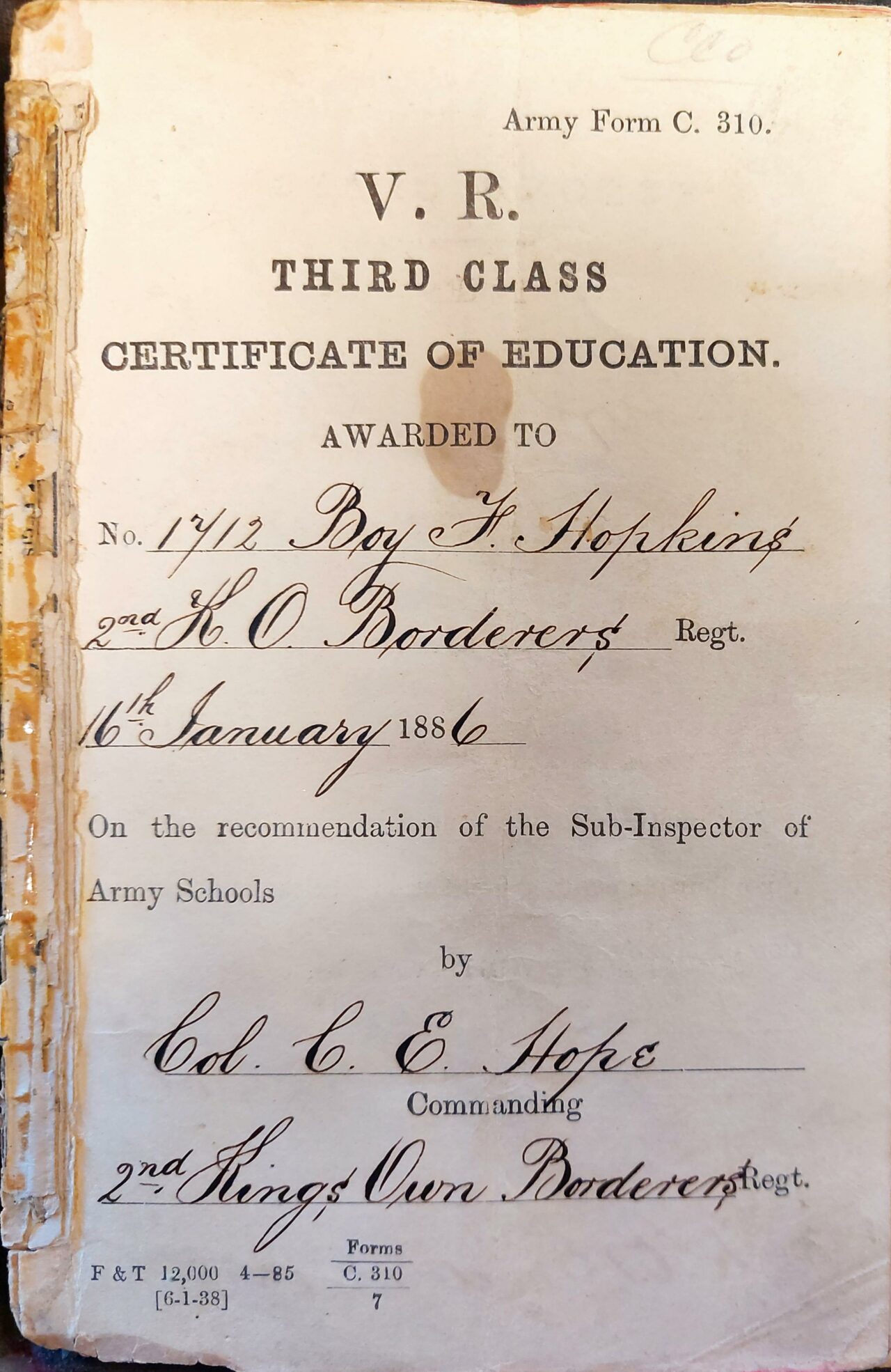
In 1908 Hopkins was presented with the Good Conduct and Long Service Medal at Maryhill Barracks in Glasgow, with HRH Princess Louise, Duchess of Connaught and Strathearn present. He was discharged as Sergeant Major on 22nd December 1910 at Hollywood.
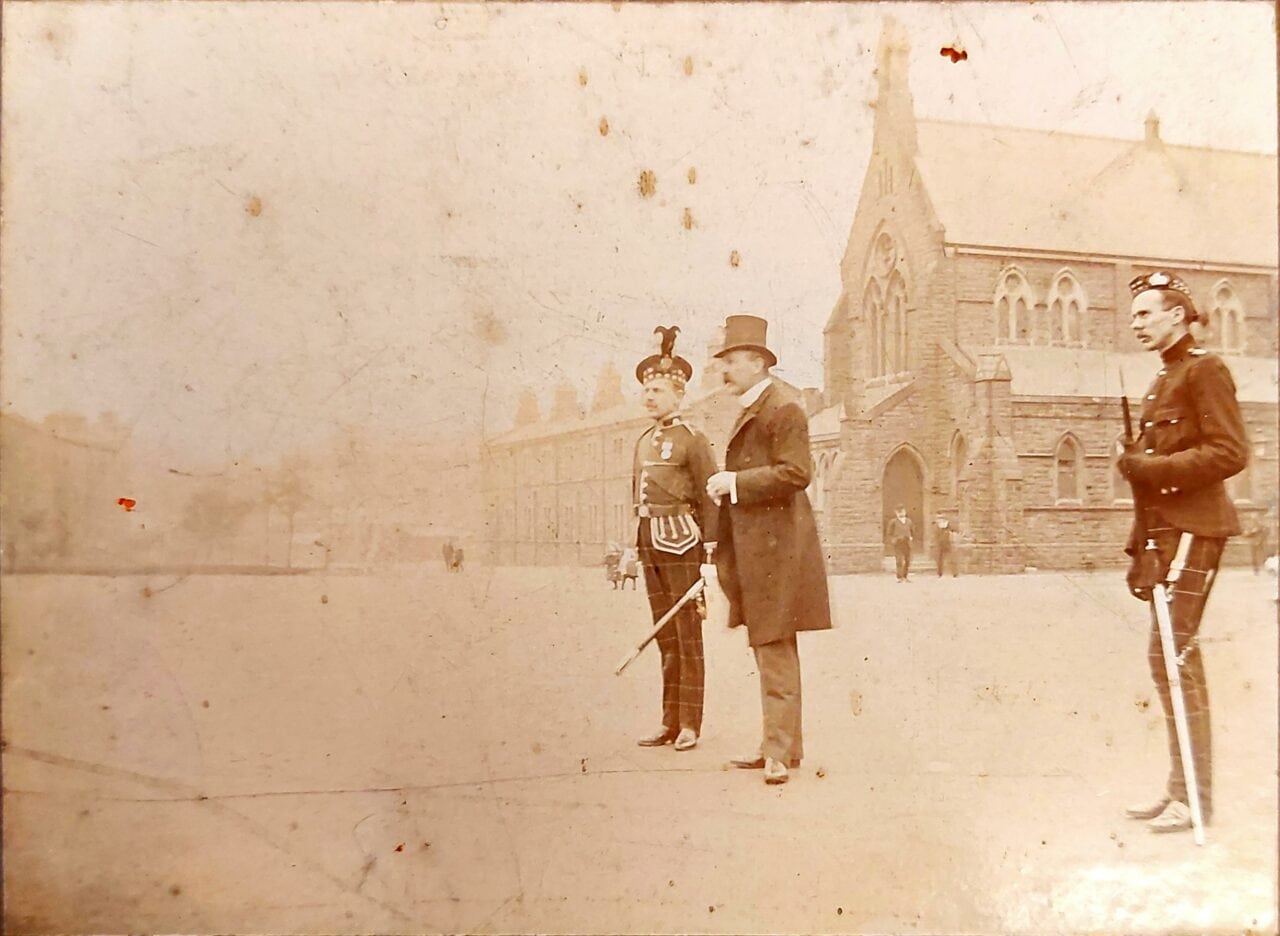
Hopkins became the inspector of canteens at Salisbury, where he settled to live, and then might have seemed a good time for his pace of life to slow down. However, with the outbreak of war in 1914, he returned to army life, fought in France, and survived the war with the trio of World War I medals and the rank of Captain. He became the barrack warden at Portsmouth during the 1930s. He died in January 1941 and, according to an obituary from the time, had a funeral of a ‘semi-military nature’.
Devoted to life in the army since age of 14, Hopkins appears to have been every inch the model hard working soldier. His medals may attest to his service in India and World War I, but an unexpected talent of Sergeant Hopkins was his ability to design charming Christmas cards. The year before the Hopkins’ stylish appearance at the Cawnpore Fancy Dress Ball of 1900, Sergeant William Martin of The King’s Own Scottish Borderers wrote a letter to his brother, the Proprietor of the Berwick Advertiser.
Dear Brother,
I have much pleasure in sending herewith one of our Regimental Christmas Cards designed by Sergeant Hopkins, now serving with us here. You will notice that the present day Borderer on the card is very much different in appearance from the Borderers you see at home. The chap on the card is in khaki or fighting costume and also wears the Leslie tartan with which we have not yet been issued.

The card is skilfully folded, with the front showing a soldier of the Regiment from 1799 and another from the then present day of 1900. It opens out to reveal an ornate Regimental Crest and the back, of course, is decorated with the Leslie Tartan. Not being happy with just designing one Christmas card that year, Hopkins created another one and Sergeant Martin obviously thought it was so good that he would send both to his brother.
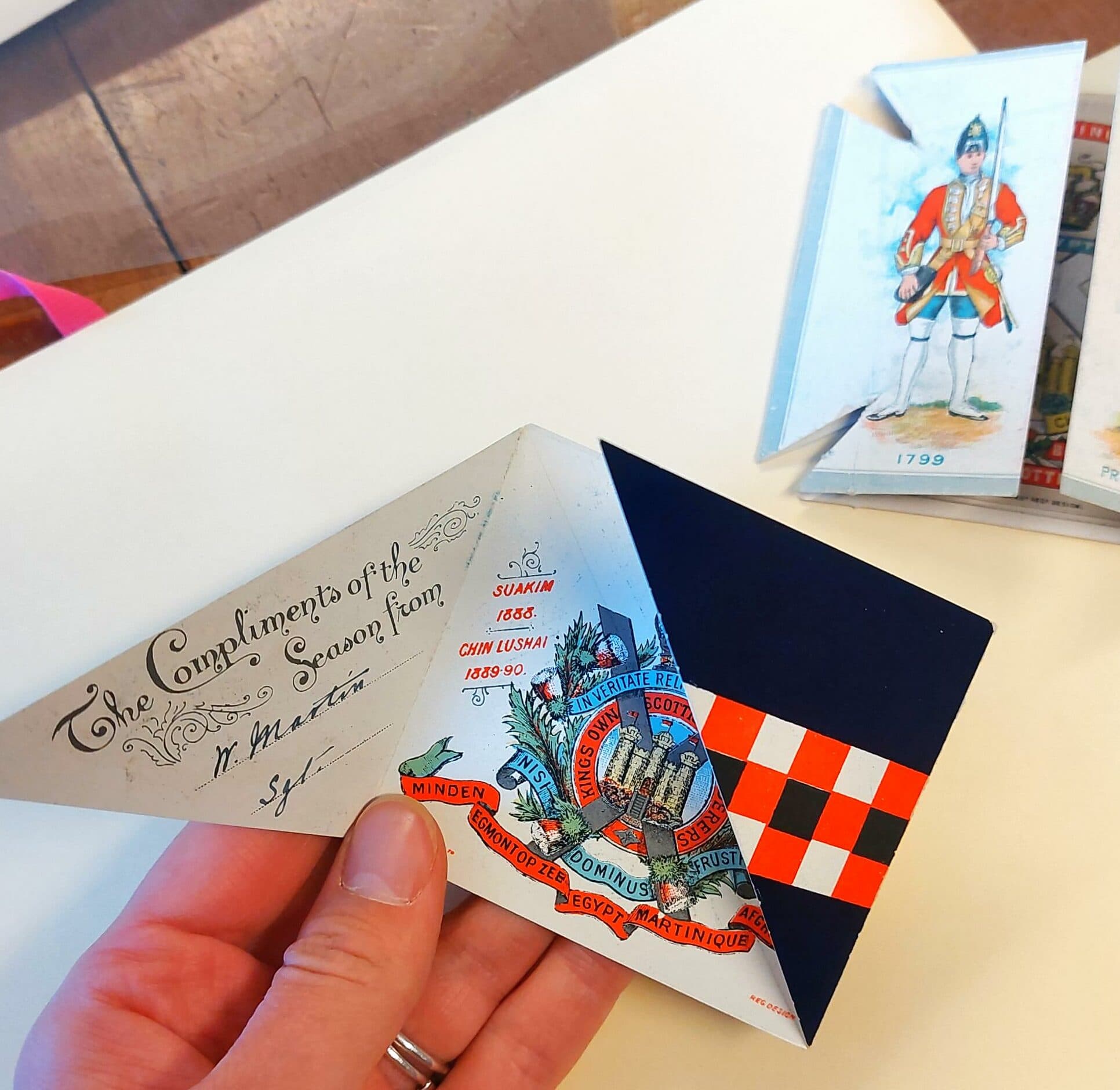
The very formal ‘Compliments of the Season’ is the only Christmassy thing about the design of both cards, but they are both so charming that it does not seem to matter.
